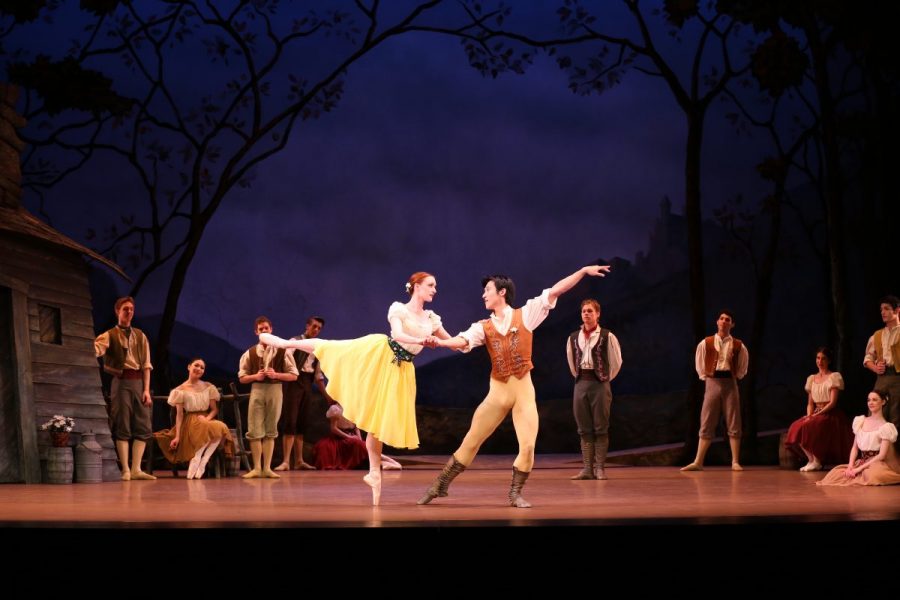@ Edinburgh Festival Theatre, Edinburgh, until Sat 31 Oct 2015 (touring)
In Scotland at least, the famous romantic ballets such as La Sylphide and Coppélia are not performed as frequently as one might like. This is perhaps understandable, as staging traditional ballets can be an expensive business. Whereas contemporary dance or modern restagings of the ballet canon can rely on, for example, a carefully designed minimal set, or indeed simply a dance floor and some choice lighting, more traditional versions of ballet come with a whole gamut of concomitant expenses.
It is a pleasure, therefore, to see the Royal New Zealand Ballet company’s new version of Giselle, performed during its European tour at the Edinburgh Festival Theatre. Although the initial and highly effective projection onto gauze at the beginning of each act gives the impression of an impending drastic reimagining of the piece, in fact the staging is very conventional, and the choreography based firmly on the late 19th century version by Marius Petipa.
The logistics and high cost of touring an orchestra makes it almost inevitable that recorded music is used, but it is certainly to the detriment of the production. To begin with, the Festival Theatre’s house PA—the perpetual fly in the ointment of an otherwise generally well kitted out venue—just isn’t up to reproducing the subtleties of Adolphe Adam’s admittedly so-so score. However, more problematic is the loss of the interaction between music and dance—the unfolding of time cannot be adjusted to the moment—and consequently an important dimension of the ballet is sadly lost.
This is unquestionably a game of two halves. The momentum of Act I is always going to be difficult to maintain, with so much mime used to convey the story, and although RNZB manage not badly, it is still a somewhat stodgy affair. Mayu Tanigaito does portray the delicate constitution of Giselle very convincingly, but her passion for Albrecht (Carlo Di Lanno) (and indeed his for Giselle) is less apparent, and it is hard to believe that she dies of a broken heart.
Act II, conversely, works far better, Tanigaito demonstrating some real technical flare, the highlight of the evening being Giselle and Albrecht’s outstanding pas de deux. Abigail Boyle gives a superb performance as Myrtha, the iron Queen of the Wilis (who is certainly not for turning), and the corps de ballets seem generally more focussed once divested of earthy garb, safely into romantic tutus.
Johan Kobborg and Ethan Stiefel’s version of Giselle cleverly emphasises the reversal of Giselle and Albrecht’s roles as they move from Act I into Act II. Giselle, so fragile in life, becomes strong and resolute in death, whereas Albrecht, the rather vapid but dashing buck of Act I, shows weakness and introspection in Act II, ultimately inviting his own death in the ballet’s new epilogue.
Thus all told, despite a slow first act and the lack of live music, RNZB’s Giselle turns out to be a very agreeable two hours, with many beautiful moments and some definite flashes of brilliance. Given that it may be some time before RNZB or indeed Giselle return to Scotland again, it is certainly worth seeking out.


Comments